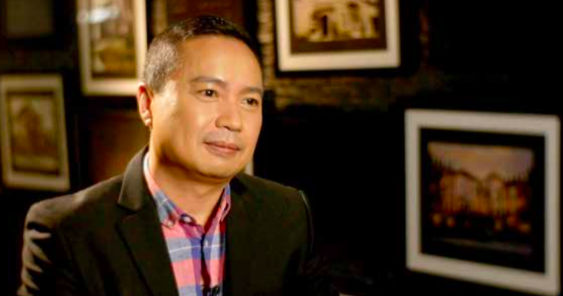by Oliver Bayani
Lucien Dy Tioco, The Philippine Star’s SVP for Sales and Marketing, sits down with adobo to share why the 28-year-old publication ventured into TV.
While most say that social media and digital is the inevitable route for newspapers to survive and prosper, Lucien Dy Tioco, SVP for sales and marketing at The Philippine Star, believes that oftentimes the best path is the road less traveled.
“It’s an inviting idea because its reach is phenomenal but you always have to play on your strengths. It makes sense for us to latch on to another mainstream media because digital has become an equalizer. If anyone can be a player in digital, then how can we become someone that can stand out?”
In 2014, the 28-year old broadsheet became the first newspaper in the country to venture into television, starting with ‘Modern Living TV,’ a show which talked about urban spaces, interior design and homemaking.
When it returned for a second season in December, it seemed that the Star was rather serious about creating a TV show. But nobody anticipated that it was committed for the long haul.
A media icon like the Star has no plans to bet on a losing horse and in March, during the MSAP Media Congress 2015, it revealed its bucking stallion: PhilStarTV—with an ambitious line up of six shows all scheduled to go live by year-end.
The Star essentially brought sections of the newspaper to the small screen, bringing to life print content that’s admittedly better seen and heard compared to just being read.
‘Modern Living TV,’ which returns for a third season this May, is a spinoff of the Saturday Lifestyle section, while ‘Wheels TV’ launched last March is inspired by the paper’s motoring section.
Also on its way is ‘Let’s Eat’, regarded as the first show of its kind in the country that melds together restaurant reviews and cooking tutorials, and ‘YoungStart’, a program meant to inspire young athletes, are scheduled to be launched within the third quarter of 2015.
Celebrity, columnist, and congresswoman Lucy Torres- Gomez will also be the lead in the TV version of her lifestyle column ‘Love Lucy’. In fact, the Star recruited its columnists, most of them notably adept at both the written and spoken word, to become the hosts of their own spinoff shows, retaining the voice and character that made Star’s lifestyle section popular in the first place.
Dy Tioco shares that each player in the print industry is actively experimenting with the form and presentation of their content, citing The Philippine Daily Inquirer venturing into radio with DZIQ Radyo Inquirer (Inquirer Radio) 990AM back in 2010 which complements their breaking news.
Dy Tioco admits that marketers and brands were initially doubtful, even worried about the whole idea of the Star venturing into another legacy medium often labeled, like print, as a dinosaur compared to the shiny online up-and-comer.
But when television was discussed in the boardroom, and plans on how to execute it were drawn out, he said that everyone felt they had something big and game-changing in their hands. “All of a sudden, we realized that this could be something explosive and keep us relevant. It just felt right.”
Helping the paper achieve what Dy Tioco called “multimedianess” was MediaQuest, a media conglomerate which secured majority stake in the newspaper back in April 2014. It is owned by Philippine Long Distance (PLDT) chairman Manuel Pangilinan and has interests in broadcasters TV5 and Nation Broadcasting Corporation and top broadsheets The Philippine Daily Inquirer and BusinessWorld.
“Being part of that huge organization helped us seek opportunities for us to synergize. For instance, we went into a partnership with Smart Communication earlier this year because we saw the potential of Smart Ads to our services. Having ideas is one thing, doing it all alone, especially in the media business, is immensely difficult.”
It surprisingly also made total business sense. Dy Tioco said that with only its first two shows, ‘Modern Living’ and ‘Wheels’, its TV venture now contributes a remarkable 10 percent of The Philippine Star’s total revenues to date. Based on that rapid growth, 30% with six shows is an idea not too farfetched.
“Miguel challenged us to do something bold to prolong the life of the newspaper and make people prefer or go back to the paper,” he said, referring to Miguel Belmonte, president and CEO of The Philippine Star.
“Since our TV venture, ad revenue decline over the last three years have curiously stopped and saw the traditional big spenders like banks, real estate and cars slowly coming back. I’m not saying that it’s phenomenal but it’s welcome news that the downtrend stopped or at least slowed down.”
PhilStarTV’s pièce de résistance is another first in the country- a partnership with Cinema One to develop a romance comedy mini-series. He says it’s their most ambitious project yet, intended not just to entertain but also to educate millennials on money matters, which is one of the Star’s key advocacies.
“When we pitched the concept of producing a romance comedy teleserye using their services, their first reaction was giggles,” Dy Tioco recalled. “Then, they asked straight out ‘Wait, you’re still a newspaper, right?’”
At this rate, contrary to its iconic slogan, The Philippine Star won’t just be a paper “you’ll read from cover to cover” –it’ll be content you’ll consume from one platform to another.
This article was first published in the May-June 2015 Issue of adobo magazine.
Read also: PhilStar’s Dy Tioco takes on expanded role at BusinessWorld








